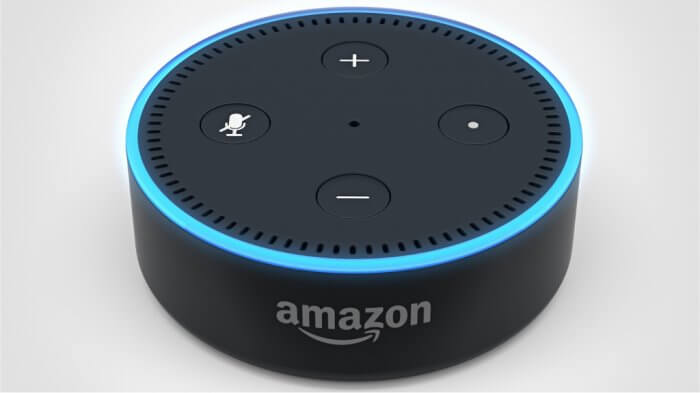Why Businesses Should Be Ready For A Voice-Activated World
Searching with a keyboard is so 2010, voice technology is the future

The race for “voice supremacy” is underway. Smart Home Hubs from all the major tech providers are pitting themselves against each other. Google Home is currently head to head with Amazon Echo and they are soon to be joined by Apple HomePod in time for the Christmas sales rush.
The digital assistants which power these new, disruptive devices have become household names; Google Assistant, Alexa, Cortana and Siri. It’s hard to overestimate the impact these new voice-activated devices will have on consumers and brands alike, as online interaction increasingly becomes spoken and screenless.
Despite the growing noise and predictions that 50% of interactions will be voice activated by 2020 (ComScore, UK), how consumers are currently using voice remains unclear.
This provides real challenges for brands making decisions about how to drive better business performance through marketing, particularly search marketing which faces significant disruption from fundamental changes to consumer behaviour.
In June this year iProspect surveyed 1,181 adults in the UK on their current voice search behaviours. The results showed that 15% use voice to interact with a device - this could be a smartphone, a games console, laptop, or smart home hub.
That translates to almost 10m people in the UK. A lot of people, not a game-changing number yet but adoption is rapidly growing. So how should brands interpret this data and prepare for a voice activated world?
Search Behaviour Is Changing: The Conversational Search Opportunity
Growing consumer confidence powered by advances in speech recognition, natural language processing (NLP) and AI, combined with the speed and ease of speaking rather than typing, is changing how people search. Searches are becoming longer, query- based and more conversational – Search queries starting with Who, What, Where and How have grown by 6% since 2015 (Google Trends).
For brands, this means ensuring they leverage the nuances of voice search to their advantage. A shopper looking for the nearest place to buy a pair of jeans may now search “Where can I buy blue Levi 511’s” rather than “Levis shop nearby”.
The obvious benefit to brands is that these longer searches are much richer in consumer intent insight, which can be used to optimise the user experience with more relevant and engaging content.
Winner Takes All: Being Discoverable in the Screenless World
A user-centric content approach is meaningless if your content isn’t discoverable. In a voice-activated landscape so many of the interactions will become screenless as people converse with their Alexa or Google Home. In this environment, where there is only one answer to the query, discoverability is a winner takes all race.
With none of the major search players offering paid opportunities to capture the top spot as yet, it falls to organic efforts to ensure you are visible - or indeed audible. Answering the questions consumers are asking directly and in an SEO-friendly structure is the first step to take to help your brand claim the number one answer spot.

Look, no screen. Voice is taking a big chunk out of the search market
Omnichannel queries will grow from Voice
To further understand where to optimise for conversational search, we dug deeper and found 56% of people using voice interactions are doing so with their mobile phone.
As a result, ‘on the go’ searches which we’ve seen accelerate over the past few years with the growth of mobile are quickly becoming some of the first to gain verbal traction too. Furthermore 10% of our voice searchers said they use voice search to ‘Find a Store Location’ and15% use it to research or even purchasing purposes.
It’s easy to see how local voice search will become even more prevalent as car manufacturers make the move towards connectivity. Ford, which is currently partnering with Amazon to introduce Alexa to its new models, predicts that nearly 90% of all new vehicles will have Voice Recognition (VR) onboard by 2022, and it’s not alone.
At CES in January 2017, three other major manufacturers announced their plans to partner with Bing, Google or Amazon. Local retailers, restaurants, even petrol stations will soon need to ensure they can be easily found with a Local search strategy which ensures they are quickly discoverable within local search platforms such as Google Maps, Waze or Yelp.
These early signs are a clear signal for retailers that they need to begin gearing up for two trends. Firstly, that local assets such as store locations need to be prioritised when ensuring your brand is voice-discoverable and secondly, consumers are beginning to expect conversational transactions, so the voice-activated experience needs to continue beyond the search page and into the brand environment.
Enable your consumers to transact through conversation
Bots are the enabler to this: applications which manage specific tasks without human intervention. Each major technology has its own version of bots; Google has actions, whilst Alexa has Skills.
Brands are able to create Bots of their own in these environments to facilitate new conversations. Domino’s, for instance, enables pizza lovers to order their favourite pizza using voice through the Alexa Skill.
And it isn’t alone; many have already invested in and built bots to provide customer service, answer questions, or just promote products. However, todays’ bots are often viewed as a novelty rather than a core marketing function.
It’s not just within search environments such as Alexa where bots are relevant; by 2020, 85% of customer interactions will be handled by a machine (Gartner) and this will be the number one way for businesses to differentiate themselves from competitors through bringing conversation experiences through into the brand experience.
Already we’re seeing brands such as Ryanair unveil voice-controlled booking and Odeon making it easy to book cinema tickets through their Facebook Messenger Bot.

Huge brands like Facebook are driving change
Coming Soon - Marketing to the Machine
Bots which sit brand side to help consumers book, buy or find information more quickly are only half the story. Digital Assistants – Google Assistant, Siri and Cortana – will increasingly become the primary access point to the consumer.
In the near future, brands will not just be marketing to the consumer, but to digital assistants. How will digital assistants determine which content to share with their consumers? Through Relevance, Consumer Advocacy and Brand Loyalty.
Will YOU be ready for the next digital revolution?
It’s no secret that, despite all the noise around mobile for the last 10 years, it caught marketers and search engines by surprise.
We’re not quite in the year of voice activation yet, but brands preparing themselves for this transformation are thinking about how their consumers will use digital assistants and voice-powered activations. They want to know what value their brand can add in this new customer experience.
Marketing to intent and providing value will transform people into fans who will not just talk to you, but invite you into their homes.
Thanks for signing up to Minutehack alerts.
Brilliant editorials heading your way soon.
Okay, Thanks!


